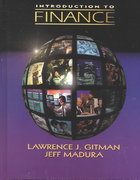Question
Comprehensive Capital Budgeting Problem Blue Bottling, Inc. (BBI) is a bottling company and is considering expanding into filling 16-ounce bottles. In order to do so,
Comprehensive Capital Budgeting Problem Blue Bottling, Inc. (BBI) is a bottling company and is considering expanding into filling 16-ounce bottles. In order to do so, BBI must purchase a new bottling machine. The machine would not replace the machine used to fill 32-ounce bottles. The risk of this project is similar to the current risk of the company. BBI uses Net Present Value as its investment decision method. Therefore, BBI executives have decided that their weighted average cost of capital would be an appropriate discount rate to use when analyzing the project.
About the Machine BBI managers estimate the cost of the machine to be $260,000. In order for the machine to be usable for BBI, it must be modified, costing $40,000. The machine will be depreciated using straight-line depreciation, assuming a 7- year life and $30,500 salvage value. BBI managers believe that the machine will be replaced at the end of 7 years at which time it will be sold for its salvage value. During the 7 years of its use, managers estimate annual earnings before interest, depreciation, and taxes (EBITDA) to be $60,000. There will be an increase in net working capital of $5000 with the new press, due to increased accounts receivable and inventory costs.
Weighted Average Cost of Capital Current investigation shows that the firm has a 40% marginal tax rate. (Round all numbers to onehundredth of one percent).
Debt The firm has 7000 of its $1000 par, 18-year, 5% semi-annual bonds that are currently outstanding and being quoted at 104:8.
Common Stock BBI common stock is currently trading for $50 per share and there are 100,000 shares issued and outstanding. There are two methods of computing the cost of capital and you should average the two values for your final cost of common stock.
The firm will pay annual dividends of $3.00 per share in the coming year. The firms dividends and earnings have been growing at an annual rate of 3.5%, and this is expected to continue in the future. Langs beta is current .8 and the current 90-day t-bill rate is 2.5% while the historic market average is 10%.
Requirements of the Assignment
A) Using Excel, create a spreadsheet that calculates all relevant cash flows (i.e., initial investment, periodic cash flows, and terminal value). Note: The spreadsheet should have data at the top and the cash flow calculations completely in equations, or picking up numbers from a previous cell. The instructor should be able to change inputs. The spreadsheet automatically adjusts to those changes. Round all numbers to the nearest dollar.
B) Compute the weighted-average cost of capital (WACC) for the chosen firm on your spreadsheet. Take this number out to the nearest hundredth of a percent (e.g., 33.33%). There is no preferred stock in the company. Determine the weight of debt and common equity by the current market value.
C) Using Excel equations, compute the NPV and IRR.
D) BBI management expressed concern over their estimate of EBITDA of $60,000, especially if the economy deteriorated suddenly. Because of this concern, you have been asked to complete a sensitivity analysis, computing the NPV if EBITDA were $54,000 instead of $60,000. (Note that if your spreadsheet is set up correctly, you should be able to change the $60,000 data input to $54,000 and all calculations will change automatically, including the calculation of a new NPV and IRR.) In fact, managers would like an estimate of the break-even level of EBITDA, if you could provide that information.
Please show any work you can!
Step by Step Solution
There are 3 Steps involved in it
Step: 1

Get Instant Access to Expert-Tailored Solutions
See step-by-step solutions with expert insights and AI powered tools for academic success
Step: 2

Step: 3

Ace Your Homework with AI
Get the answers you need in no time with our AI-driven, step-by-step assistance
Get Started


